This is a guide to the various species of bird that can or have been seen in Hethersett and the immediate area. It is based on my own sightings and those residents I have had a chance to speak to as well as open source research and local literature. The species have been rated as common which are the birds you can expect to see on a daily basis. Less common which tend to be either specific in terms of favoured location or more transient visitors. Rare may only be seen by the lucky or the persistent observer and last but not least mega which in birding terms are the crowd pullers and so far include only the historic accounts over the last century or two, However we can but dream they may one day re appear and as with many things, you make your own luck.

A Mega. Golden Oriole last seen (and shot) in 1824
The editors are eager to hear from any one who has records that can be added and for any glaring errors that may have crept in so please contact suburbanbirder@gmx.com if you can assist.
Species are listed in a rough taxonomic order and have been hyper-linked to pages which will give you images sounds and further details mostly courtesy of the RSPB.
Mute Swan – Rare – Britain’s most common swan resident in Norwich and likely to be a passing bird which could stop off at our larger lakes however only one record of a fly over sighting in recent years. One male also seen on Hethersett Hall Lake in December 2015 and February 2016.
Bewick’s Swan – Rare – Only two records of flyover flocks of these winter visiting swans. March 2010 and Feb 2105 (HB).
Greylag Goose – Less Common – There is a small relatively wild flock of these which favour the small lakes and adjacent fields in the East and West of the village
Canada Goose – Less Common – There are small number of these geese which have bred in Hethersett Hall Park and can be seen at other small lakes occasionally.

Barnacle Goose – Less Common – There are small number of these geese which have bred in Hethersett Hall Park and can be seen at other small lakes occasionally. A flock of 50 birds seen in 1995 and a flock of 57 in 1996 feeding in stubble fields (DD).
Brent Goose – Rare – Only one know sighting of this winter visitor from Russia a single bird seen with barnacle geese in 2000 (DD).
Egyptian Goose – Less Common – Not currently know to breed closer than Great Melton but a flock of up to 41 birds overwintered in fields near Great Melton Church 2014.
Wigeon – Rare – Winter visitor in small flocks (up to 200) at nearby Bawburgh which included the a single specimen of the rarer American Wigeon in the winter of 2013. Only Hethersett record are small flocks heard ‘whistling over the village in 2013. (HB) and another over the village in April 2017 (TP)

Gadwall – Less common- Regular sighting on Hethersett Hall Lake since 2016 .
Teal – Rare – The smallest of the local ducks which breed 2 Drakes seen on Hethersett Hall Lake March 2017 and a further drake seen on the lake in February 2018 and a flock of 7 birds in March 2018.

Mallard – Less Common – This is a resident species of duck that has grown notable by its absence over the last few years. Breeds in small numbers in most of the small lakes and large ponds around the village.

Goosander – Rare – Six birds seen on Hethersett Hall Lake in 1997 (DD). More regular on the nearby UEA broad as a winter visitor. Drake present on the Hethersett Hall lake January 2016.
Ruddy Shelduck – Rare – This is a feral or escaped ornamental species but there are records of single birds in April 2006 & 2007 (DD).

Red Legged Partridge – Less Common – This is an introduced species of game bird with its numbers heavily influenced by the shooting industry. likely to be seen in fields close to the farms particularly to the west of the village.
Grey Partridge – No Records – This natural game bird sits on the red list due to its decline in population and should once have been seen in the parish however the closest I have seen the birds is in Wicklewood in 2013. Records sought locally recent or historic to suburbanbirder@gmx.com .
Pheasant – Common – Another resident game bird of the fields and woods outside the village can be very common before the crops grow up particularly in spring when the shooting season is over and the cock birds will spar in the fields. More difficult to find once the undergrowth grows up and they resume skulking about.

Cormorant – Less Common – An occasional visitor to the Fishing lake on the west of the Village.
Grey Heron – Common – A resident bird with a Small breeding colony at Great Melton. Regularly seen anywhere near the lakes and streams to the East and West of the village and due to its size an unmissable flyover bird.
Little Egret – Rare – Seen regularly in nearby Great Melton and Bawburgh it is likely that these delicate white herons but only one flyover bird recorded over the Great Melton Reservoir July 2017.
Great White Egret – No Records – A single bird seen regularly as a visitor to Great Melton Bawburgh and Costessey in 2013 to 2015 and returned every winter since.
Red Kite – Rare – None currently breeding in the area but seen occasionally flying through. The nearest regular sightings tend to be towards the Hingham area. A conservation success story of the last few decades as thirty years ago you would have only stood a chance of seeing these impressive raptors in South Wales.

Sparrow Hawk – Less Common – A resident breeding bird which whilst common can be difficult to see although more obvious in the spring when likely to display. Most obvious sign they are present is a big patch of feathers and what is left of their prey which can include birds as large as a magpie.
Peregrine Falcon – Rare – believed to be an occasional visitor with the nearest pair breeding at Norwich Cathedral as well as regular birds at Wymondham Abbey.
Buzzard – Less Common – A resident breeding bird which has only been so for about the last 15 years as prior to this persecution had kept them out of the area.
Kestrel – Less Common – A resident breeding bird often see close to the A11 hovering whilst it hunts its favoured prey of voles and mice. Can also be seen regularly in the fields to the all round the village
Hobby – Rare – A summer visitor to Norfolk tending to pass through the area rather than frequent. Sightings over the Village in Sept 2009, 2010, 2012 and June 2013 over Mill Rd. (HB).
Little Grebe – rare – Only a few recorded sightings of this little waterbird with its puffball plumage and habit of spending as much time under water as on top. Single birds seen at the Hethersett Hall Lake November 2015 and January 2016.
Great Crested Grebe – rare – Only one recorded sighting on Hethersett Hall Lake Feb 2017.
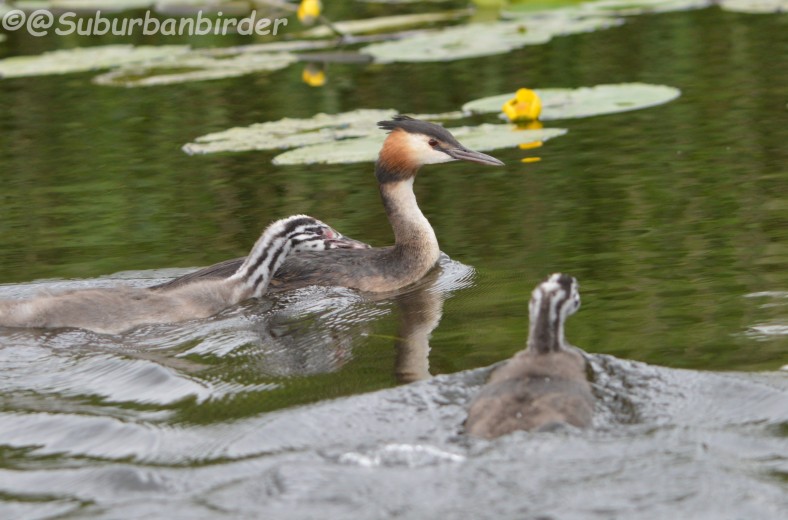
Moorhen – Common – A resident breeding bird wherever there is a pond or lake. 65 birds seen at Hall Lake at one time January 1995 (DD).
Coot – Less Common – believed breeding regularly at Hethersett Hall Lake .
Oystercatcher – Rare – Another bird likely to pass through and generally a bird of the coast or water meadows in Norfolk. Its distinctive and loud call has allowed it to be heard and identified over the village Aug 2012, Apr 2013 and July 2014. (HB). Also a couple of flyover birds in May 2016 and several further sightings over the village during 2017.

Golden Plover – Rare – Another likely to pass through on migration rather than stop. One record only of this bird again picked out by call Oct 2013. (HB).
Lapwing – Rare – Likely to pass over in flocks in the winter as birds seen regularly at Great Melton but only recorded sightings in fields around Thickthorn January 2018.
Snipe – Rare – An occasional visitor which due to its camouflage and secretive nature is probably under reported.
Woodcock – Rare – Another occasional visitor which by nature is difficult to see. A game bird favouring the woods particularly the damp woods such as those found near the Lakes. Record of one speeding along Colney Lane at 35mph in Nov 2014. (HB). A couple of records including in the village during a snowy cold snap in March 2018.
Black-headed Gull – Common – Predominantly a winter resident outside of its breeding season. As happy to be feeding from bird tables and dropped chips as it is to be feeding on fields and playing fields.
Common Gull – Common – Another winter visitor seen fairly often on the playing fields around the village. Not quite as numerous as the smaller Black Headed gull but will often be seen together .

Lesser Black-backed Gull – Common – Resident seen regularly to the North and South of the village. Usually seen flying over the village rather than settling. Favours the buildings of the Little Melton Food Park and may breed here.

Herring Gull – Common – Predominantly a winter visitor likely to be seen feeding on playing fields usually only single birds.

Common Tern – Less Common – The most likely tern to be seen inland appears to be a rare visitor to the larger lakes and occasionally see over the village in spring and Autumn on passage. Current records suggest only seen once or twice a year between April and July with last sightings April and June 2015.
Feral Pigeon – The closest we get to the town pigeons are the Heinz 57 doves that frequent the Church Farm Buildings.

Stock Dove – Less Common – Occasional visitor feeding on fields around the viillage. No known breeding records
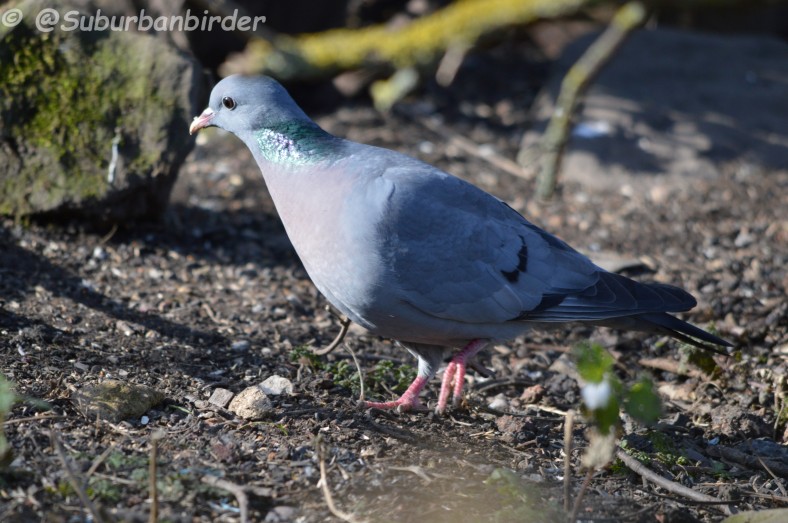
Wood Pigeon – Common – Hundreds of them everywhere, one of the species that is increasing by the year.

Collared Dove – Common – A natural coloniser over the last few decades now regular breeder placing its poorly constructed stick nest on any available satellite dish.
Cuckoo – Rare – A few decades ago this was a common bird in the Wensum valley and outskirts of Norwich now tends to be a brief visitor to the UEA and Bawburgh areas with only one recorded bird heard calling locally in May 2015.
Barn Owl – Less Common – Occasional visitor to the rural parts of the area and the paddocks. Single pair breeding in the village over the last few years . Sightings at the Pit June 2011 and hunting near Ketts Oak 2012. (HB).

Little Owl – Less Common – Resident breeding birds often seen on the rural northern fringes of the Village.
Tawny Owl – Common – Throughout the Village but dependent on areas of large mature trees for nesting. More often heard than seen especially in the late Autumn

Swift – Common – Summer resident breeder arriving in early May and nesting under the eaves of some older properties.
Kingfisher – Less Common – Occasionally sighted on the lakes or rivers but not a resident just passing through. Seen regularly at Great Melton reservoir 2015.
Green Woodpecker – Less Common – Tends to favour park lands such as those around the local Halls. Its distinctive call will often give it away before you see one.
Greater Spotted Woodpecker – Less Common – Resident breeding bird which will come into gardens and feed on peanuts or fat balls. More usual to see it in wooded areas around the village.
Lesser Spotted Woodpecker – Rare – Declining Nationally not seen in the village since 1966 (DD). One record of a bird heard calling in the grounds of Hethersett Hall Spring 2015 courtesy of Bird Forum.
Golden Oriole – Mega – Passage migrant last seen in Hethersett 1864
Skylark – Common – A resident breeding bird but declining nationally and possibly locally. Nests on the ground in arable fields.

Swallow – Common – Another declining bird which breeds locally but tends to favour farm buildings with a supply of flying insects so often near animals.

House Martin – Common – A rapidly declining local and national species still seen regularly over the summer months. Breeding colony every year in Admirals Way.
Meadow Pipit – Less Common – Possibly under reported and not believed to be resident. A bird of the open field last seen January 2015.
Pied Wagtail – Less Common – Resident bird but more noticeable in the winter when flocks gather on the fields and go to roost in Wymondham and Norwich.

Grey Wagtail – Rare – Passage visitor although they breed in Wymondham so always a possible near water. Two juveniles recorded in 2008. (DD). Single bird seen in Feb 2017 at Church Farm (AE).

Spotted Flycatcher – Rare – one sighting of an adult and young bird in the spring of 2020 by Tracy and Andy M. who took the following picture at the Great Melton Reservoir,

Waxwing – Rare – Occasional winter visitor last recorded locally in March 2013 with four birds seen by Tescos. Also Seen in village in 2010 and 2012.(HB). single bird also recorded in winter 2017.
Wren – Common – Very common breeding through-ought the area both in the village and in the rural outskirts. More often heard than seen their secretive almost mouse like behaviour leads to them being under reported.

Dunnock – Common – Very common breeding species often chasing each other round gardens in pairs or threes and picking at insects under bushes and occasionally feeding on seed feeders.
Robin – Common – Resident breeding bird but populations change throughout the year with passage birds on migration.
Whinchat – Rare – A passage migrant which breeds predominantly in Scotland and North and west of the UK. whilst it could potentially turn up during Spring and Autumn the only record I can find is from January 1864! (HS)
Black Redstart – Rare – Only one recent record of this passage migrant
Blackbird – Common – Resident breeding bird but populations change throughout the year with passage birds on migration.

Fieldfare – Less Common – Winter Visitor each year feeding on berries and fruit. Recorded as gathering in large numbers in the grounds of Hethersett Hall in early spring before returning to the continent. October is the peak month for sightings each year with a flock of 170 birds recorded in Oct 2012. (HB).
Redwing – Less Common – Winter Visitor each year feeding on berries and fruit. Recorded as gathering in large numbers in the grounds of Hethersett Hall in early spring before returning to the continent. Regular flocks over the village in all recent winters given away by their ‘seep’ flight call. As with the Fieldfare October seems to be best month to see them locally with a flock of 400 birds recorded in 2012. (HB).
Mistle Thrush – Less Common – Resident breeding bird but much less common than the similar Song Thrush. Numbers occasionally boosted with winter migrants sometimes frequenting the fields around the village.
Song Thrush – Common – Breeding in the village and outskirts. Its early morning and late evening song allow you to find them easily.
Blackcap – Common – Breeding summer warbler. These birds are now overwintering in the UK but I am not aware of any such local records.
Garden Warbler – No records – but seen regularly nearby at Bawburgh and Costessey.
Lesser Whitethroat – Less Common – Believed to be a local breeding summer warbler. More likely to be heard than seen in spring. Recorded sightings found in 2010 (HB) and last seen by editor April 2015 in West Hethersett. Appears to be regular breeder with sightings in 2016 and 2017.
Whitethroat – Common – More likely to be seen and heard than the rarer Lesser Whitethroat this summer breeding warbler will be singing its scratchy tune in the mature hedgerows particularly outside of the village itself.

Chiffchaff – Common – This summer breeding leaf warbler is the new herald of spring with its call that gives the birds name ringing out from the tops of deciduous trees in any established woody area.

Willow Warbler – Less Common – Another summer breeding leaf warbler is less common than the Chiffchaff and arrives a few days later in the Spring. At a distance or with a poor view very difficult to tell apart from the Chiffchaff until it sings and then there is no problem splitting the two.
Nightingale – Rare with only one singing bird recorded doing a one night only performance in May 2017 by the Village Hall.
Goldcrest – Common – A bird that appears to be doing well in and around the village probably aided by recent mild winters. As Britain’s smallest bird it is susceptible to hard winters. Its very high pitched call can be heard belting out (if you have young enough ears) usually from the evergreen trees it prefers to feed and nest in.

Long Tailed Tit – Common – regular garden visitor and resident breeding bird. Will visit bird feeders with fat-balls and sometimes peanuts in small flocks in the winter.

Blue Tit – Common – regular garden visitor and resident breeding bird. Happy to nest in a well placed nestbox and feed on peanuts fatballs and seed.

Great Tit – Common – Regular garden visitor and resident breeding bird.

Coal Tit – Less Common – Not quite as common as its more colourful cousins the blue tit and the great tit. Regular garden bird and resident breeding bird. Will happily feed on peanuts and seed feeders but likely to dash in and dash away to feed or store food.

Marsh Tit – Rare – Least common of the resident tit family. Believed to be a resident breeding bird but limited sightings only so this can’t be confirmed from my records.
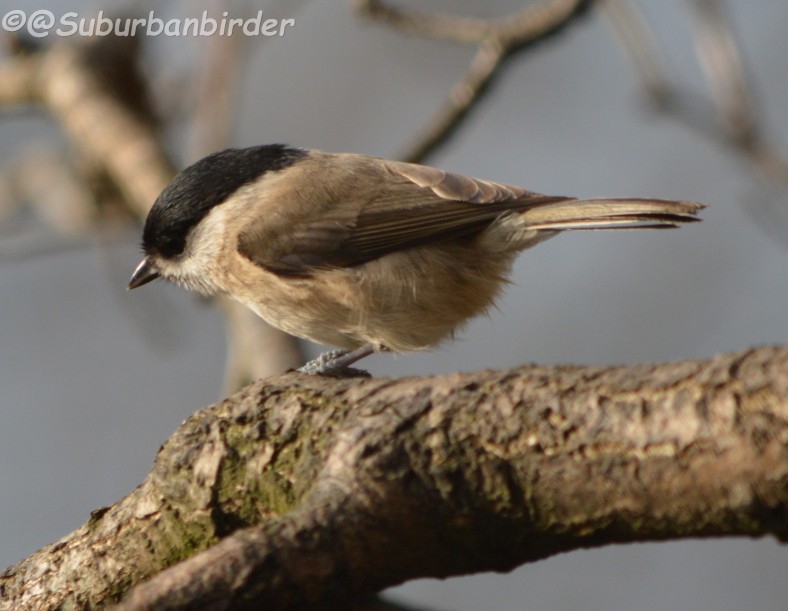
Willow Tit – Very Rare – with one sighting of a singing bird in woods near Market Lane April 2018 DB.
Nuthatch – Less Common – Breeding resident most likely to be seen in wooded areas around the village but will come into feed in gardens particularly on peanut feeders in the winter.

Treecreeper -Less Common – Breeding resident most likely to be seen in wooded areas around the village but occasionally seen passing through in gardens with mature broadleaved trees.

Jay – Common – regular garden visitor and resident breeding bird. Will visit bird tables if peanuts are left out for them.

Magpie – Common – another regular both in and out of the village. very noticeable in the spring when their nest hunting activities bring them a lot of attention from other angry birds.

Jackdaw– Common- Regular breeding resident bird. Seen filling chimneys with sticks for nest building anywhere there is an unprotected chimney.

Rook – Common – Several rookeries around the village notably round the Church and Church Farm and The Fire head quarters . Whilst common feeding on verges and fields recent counts suggest an overall decline. Recent counts are listed in the 2013 edition of Natterjack the quarterly magazine of the Norfolk and Norwich Naturalists Trust.
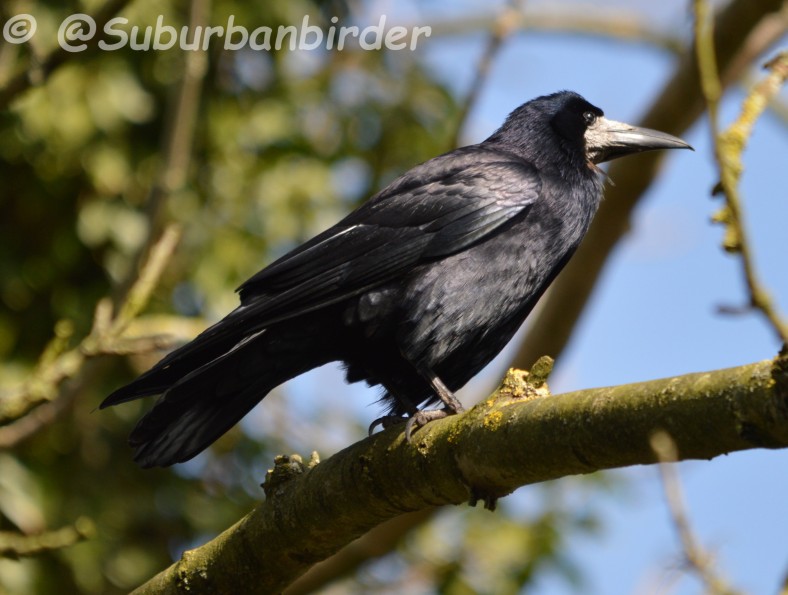
Carrion Crow – Common – Resident breeding bird seen regularly in and around the village. Another species that prefers mature trees fro a nest site.
Hooded Crow – Mega – Sightings of passing birds probably off course from the continent in 1956 and 1960
Starling – Common – regular garden visitor and resident breeding bird. Declining nationally.

House Sparrow – Common – regular garden visitor and resident breeding bird.

Tree Sparrow – rare – only one known sighting of this rarer cousin of the house sparrow alongside a house sparrow flock by the Queens Head Pub in January 2017.
Chaffinch – Common – regular garden visitor and resident breeding bird.
Brambling – Rare – A winter visiting finch more likely to be a flyover bird at least but seen and heard in the village October 2010, 2011,2012 and in March 2013.
Green Finch – Common – regular garden visitor and resident breeding bird.
Goldfinch – Common – regular garden visitor and resident breeding bird.
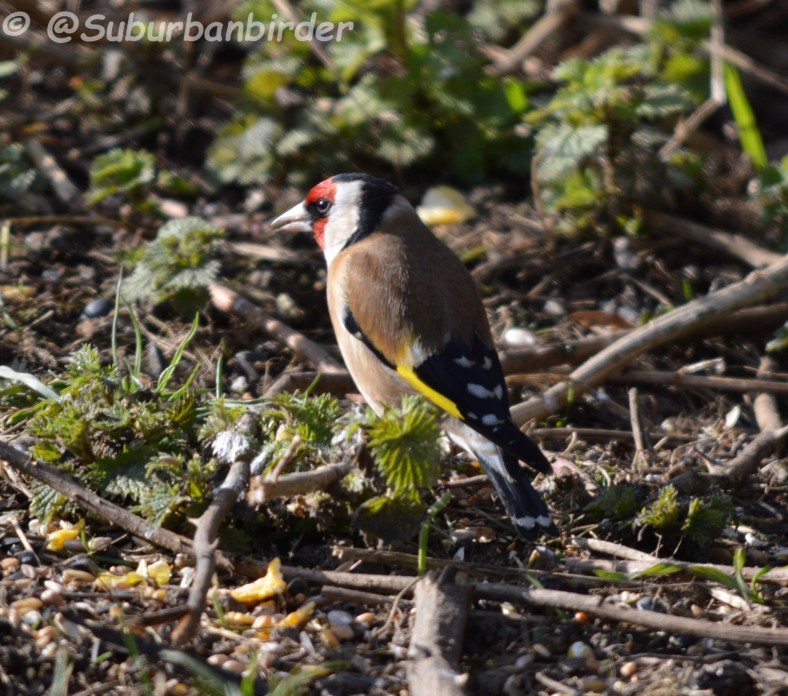
Siskin – Less Common – Winter visiting Finch sometimes seen in woods on the outskirts of the village feeding on alder or birch. Has the potential to visit garden seed feeders. Village records in Sept 2010 and Oct 2011. (HB).

Linnet – Less Common – Resident finch of the open countryside. No recorded breeding records but certainly breeds nearby. Flock of seventy birds seen in fields around the Wong August 2015.
Lesser Redpoll – Rare – Another winter visiting finch seen regularly at feeders at the UEA and as an occasional flyover bird in the village. Oct 2010 and Apr 2013. (HB)
Bullfinch – Less Common – Big bold colourful finch seen regularly in the established field hedges around the village. Will occasionally visit gardens and feeders especially for sunflower seeds

Yellow Hammer – Less Common – A resident breeding finch again likely to be seen in the established field hedges round the village.

Reed Bunting – Less Common – A few winter records with some lucky residents getting garden visits close to the edge of the village.

References:
(DD) Don Dorling ‘Wild About Hethersett’. 2011
(HS) Henry Stevenson ‘Birds Of Norfolk’ 1866
(HB) Birdforum’s very own Hethersett Birder
(AE) Anne Edwards




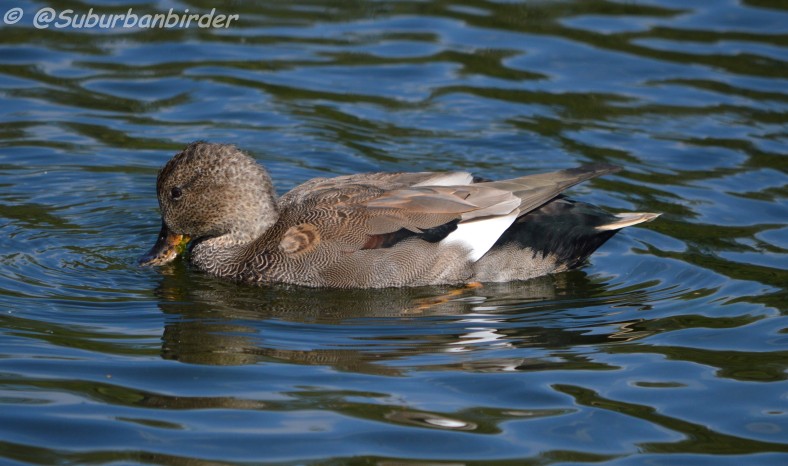



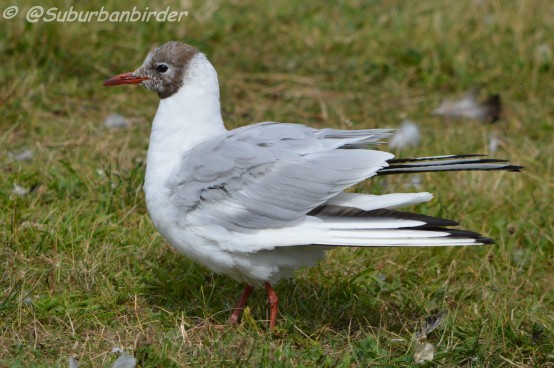


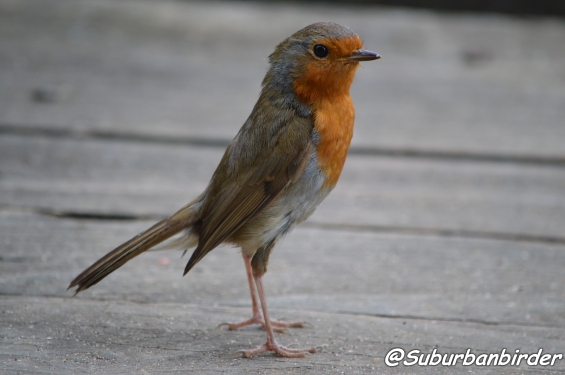



We had a lesser spotted woodpecker visiting regularly (there was an old diseased ash tree on the adjacent property) a few years ago, but since its removal haven’t seen any woodpeckers here. We also had a resident blackcap but tragically the ancient hedge running between our properties has been ripped out by new owners last year and the garden cleared and laid to lawn so unfortunately we have lost a lot of birdlife.
LikeLike
What a wonderful list of birds and great place to see them.
LikeLiked by 1 person
Congratulations!
I have nominated your blog for the Real Neat Blog Award.
More about this nomination is at
https://dearkitty1.wordpress.com/2015/07/07/real-neat-blog-award-congratulations-ten-bloggers/
LikeLike
Thankyou for your nomination
LikeLiked by 1 person
Well deserved 🙂 All the best for you, your blog and the birds!
LikeLiked by 1 person
wow cant believe the amount of different birds in your area i would love to visit. we get lots of grey herons.
photographingdabblingducks.wordpress.com
LikeLiked by 1 person
What a wonderful list of birds you have with lots of information. Great photos!
LikeLiked by 1 person